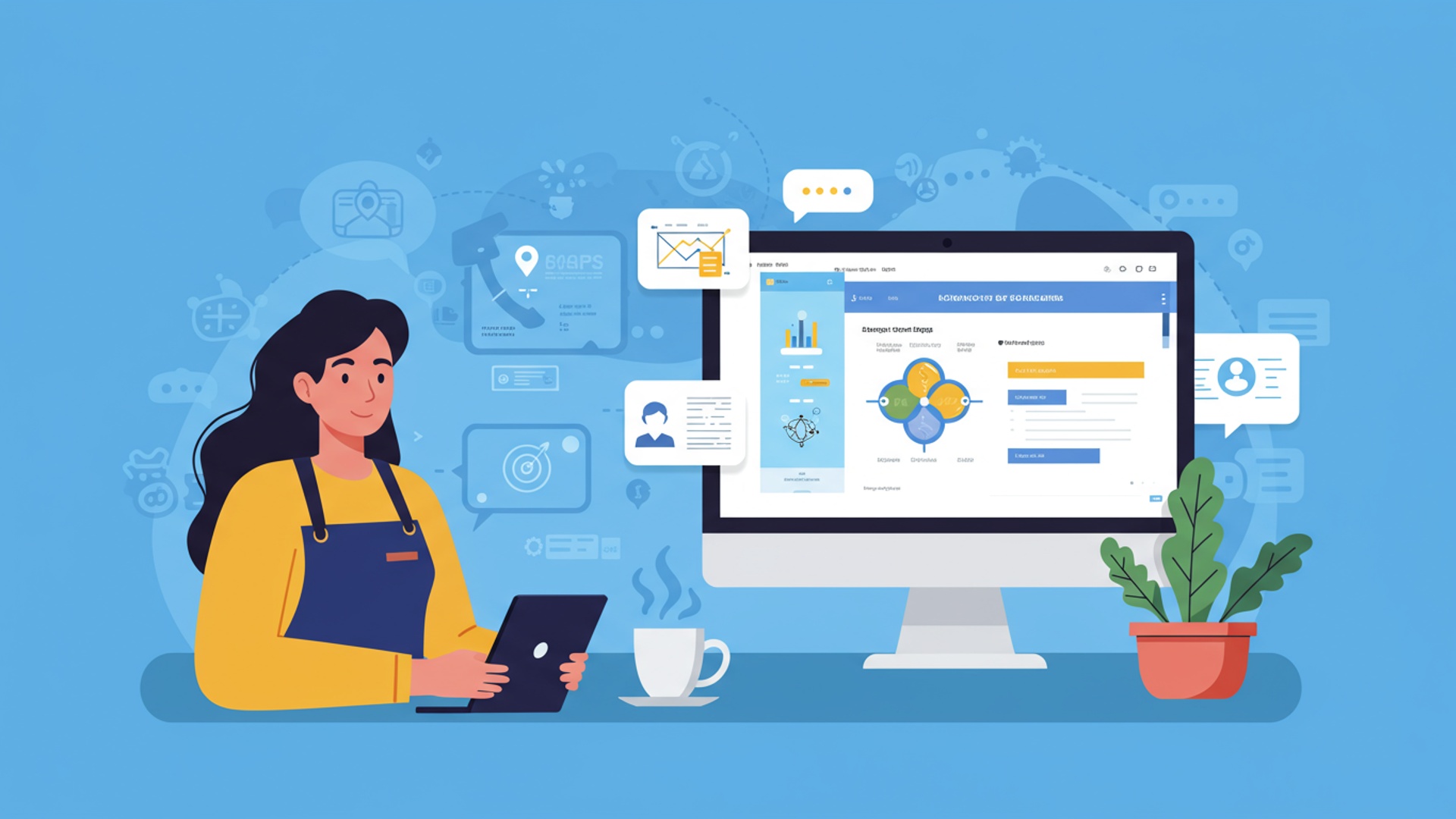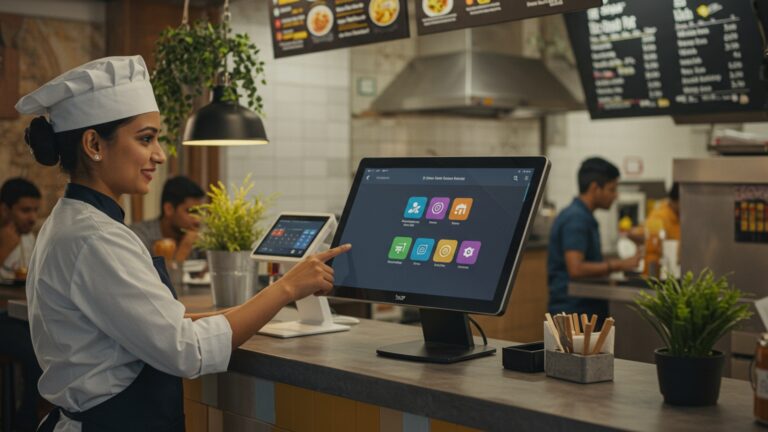Learn How POS Software Can Revolutionize Your Small Business Operations
Small businesses often grapple with operational inefficiencies, from manual inventory counts to disjointed payment processing. Modern pos software transcends simple transaction handling, evolving into a sophisticated ecosystem that drives efficiency and growth. Consider how cloud-based systems now offer real-time inventory synchronization across multiple sales channels, preventing stockouts for a busy retail store or optimizing ingredient levels for a restaurant. This integrated approach, a significant recent development, leverages data analytics to reveal purchasing patterns, allowing small businesses to personalize customer experiences and forecast demand with unprecedented accuracy, moving far beyond traditional cash registers. Embracing this technology is no longer optional; it’s a strategic imperative for competitive advantage in today’s digital economy.

Understanding the Core of POS Software
At its heart, POS software, short for Point-of-Sale software, is the digital brain behind every transaction your business makes. Gone are the days of clunky cash registers and handwritten ledgers; modern POS systems are sophisticated platforms that process sales, manage inventory, track customer data. much more. Think of it as the central nervous system for your retail store, restaurant, or service-based business, orchestrating all customer-facing and back-office operations from a single interface.
Historically, a POS was simply where money changed hands. Today, But, the evolution of technology has transformed it into an indispensable tool for business intelligence and operational efficiency. Early versions were often proprietary hardware systems, expensive and difficult to update. The advent of cloud computing, But, has democratized access to powerful pos software, making it affordable and accessible for even the smallest of businesses. This shift means small businesses can now leverage enterprise-level features without the hefty price tag.
Why Small Businesses Need Modern POS Software
Many small business owners start with basic cash registers or even manual systems, believing comprehensive pos software is an unnecessary expense. But, this approach often leads to hidden costs, inefficiencies. missed opportunities. Modern pos software addresses several critical pain points that commonly plague small enterprises:
- Manual Error & Inefficiency
- Lack of Data Insights
- Poor Customer Experience
- Inventory Management Headaches
- Employee Management Challenges
Relying on manual processes for sales, inventory. reporting is time-consuming and prone to human error, leading to discrepancies, stockouts, or incorrect pricing.
Without structured data, understanding sales trends, popular products, or peak hours becomes guesswork, hindering informed decision-making.
Slow checkout lines, inability to track customer preferences, or difficulty with returns can frustrate customers and drive them to competitors.
Keeping accurate track of stock levels, managing multiple SKUs. reordering at the right time is a perpetual challenge, leading to either overstocking or lost sales.
Scheduling, tracking hours. monitoring sales performance without a centralized system can be cumbersome for small teams.
Implementing robust pos software directly tackles these issues, laying a foundation for scalable growth and improved profitability.
Key Features and Their Impact on Operations
Modern pos software offers a suite of functionalities designed to streamline and enhance various facets of your business. Understanding these features is crucial for appreciating how a POS can truly revolutionize your operations.
- Sales Processing & Payment Integration
- Speed & Accuracy
- Diverse Payment Options
- Example
- Inventory Management
- Real-time Tracking
- Automated Reordering
- Multi-location Support
- Actionable Takeaway
- Customer Relationship Management (CRM)
- Customer Profiles
- Loyalty Programs
- Targeted Marketing
- Case Study
- Reporting and Analytics
- Sales Reports
- Employee Performance
- Profitability Analysis
- Credible Source
- Employee Management
- Time Clock Functionality
- Access Permissions
- Sales Performance Tracking
Quickly scan items, apply discounts. process transactions, significantly reducing checkout times.
Accept credit/debit cards, mobile payments (e. g. , Apple Pay, Google Pay), gift cards. even contactless payments, catering to all customer preferences.
A small coffee shop owner, Sarah, found that implementing new pos software with integrated payment processing cut her average transaction time by 30 seconds, leading to shorter lines during peak morning rushes and happier customers.
Automatically update stock levels with every sale and return, providing an accurate view of what’s on hand.
Set reorder points for popular items, triggering alerts or automatic purchase orders when stock runs low, preventing stockouts.
For businesses with more than one outlet, manage inventory across all locations from a single dashboard.
Utilize the inventory forecasting features of your pos software to predict demand based on historical sales data, optimizing your purchasing decisions.
Capture customer contact data, purchase history. preferences directly at the point of sale.
Easily implement and manage loyalty points, discounts. rewards to encourage repeat business.
Use collected data to segment customers and send personalized promotions, increasing engagement and sales.
“My boutique saw a 15% increase in repeat customers after we started using our pos software’s CRM features to track purchases and offer personalized discounts on their favorite brands,” shares Mark, owner of ‘Urban Threads’.
Gain insights into daily, weekly, monthly. annual sales performance, identifying best-selling products and peak sales periods.
Track individual employee sales, hours worked. commissions, aiding in performance reviews and payroll.
comprehend which products or services generate the most profit by factoring in costs.
According to a study by the National Retail Federation, businesses leveraging data analytics, often provided by advanced pos software, consistently outperform those that don’t in terms of growth and profitability.
Employees can clock in and out directly through the POS, simplifying payroll.
Define different levels of access for staff, ensuring data security and preventing unauthorized actions.
Monitor individual sales metrics to identify top performers and areas for training.
Traditional vs. Modern POS Software: A Transformative Comparison
To truly grasp the revolutionary potential of contemporary pos software, it’s helpful to compare it against the methods many small businesses still cling to.
| Feature/Aspect | Traditional Cash Register / Manual System | Modern POS Software |
|---|---|---|
| Sales Processing | Basic transaction recording, limited payment types (cash, basic card reader). | Rapid, accurate transaction processing; accepts all major payment types (chip, tap, mobile, online). |
| Inventory Management | Manual counting, spreadsheets, prone to errors, delayed updates. | Real-time tracking, automated reordering, multi-location sync, detailed stock reports. |
| Customer Data | Non-existent or rudimentary (e. g. , sign-up sheets). | Comprehensive CRM, purchase history, loyalty programs, targeted marketing capabilities. |
| Reporting & Analytics | Basic Z-reports, manual calculations for insights, time-consuming. | Instant, customizable reports on sales, profit, employee performance, trends; data-driven insights. |
| Employee Management | Manual time cards, separate payroll systems. | Integrated time clock, shift scheduling, performance tracking, access permissions. |
| Scalability | Limited; requires significant manual effort to expand. | Highly scalable; easily adds new terminals, locations, or features as business grows. |
| Cost (Ongoing) | Lower initial cost. high hidden costs in labor, errors. lost opportunities. | Subscription-based (SaaS) model, clear operational cost, significant ROI from efficiencies. |
| Accessibility | Tethered to the physical register; data not easily accessible remotely. | Cloud-based access from anywhere, any device; mobile POS options for on-the-go sales. |
Real-World Applications and Use Cases
The versatility of pos software means it can be tailored to a wide array of small business types, delivering specific benefits:
- Retail Boutiques
- Restaurants & Cafes
- Service Businesses (Salons, Spas)
- Food Trucks & Mobile Vendors
- Small Grocery Stores
A fashion boutique owner can use pos software to track which styles are selling best, manage returns seamlessly. build customer profiles to offer personalized recommendations for new arrivals. They can also use mobile POS devices for pop-up shops or sidewalk sales, extending their reach beyond the physical store.
Imagine a busy cafe where orders are taken on tablets, instantly sent to the kitchen display system (KDS). customer loyalty points are automatically applied. The pos software helps manage table layouts, split bills. track ingredient inventory to minimize waste and ensure consistent menu availability.
For a hair salon, the pos software handles appointment scheduling, manages stylist commissions, tracks product sales (shampoos, conditioners). maintains client history, including their preferred services and color formulas. This enhances the client experience and streamlines staff management.
Cloud-based pos software connected to a mobile device (like an iPad) allows food truck operators to accept various payment methods, manage their limited inventory on the go. track sales performance across different locations or events. This flexibility is critical for their operational model.
A neighborhood grocery can leverage pos software for detailed inventory management, tracking expiration dates, managing supplier orders. offering promotions based on customer purchase history. This helps reduce spoilage and ensures shelves are always stocked with popular items.
In each of these scenarios, the pos software isn’t just a transaction tool; it’s an operational backbone that provides insights, saves time. enhances both the customer and employee experience.
Choosing the Right POS Software for Your Business
Selecting the ideal pos software is a critical decision. Here are actionable takeaways and factors to consider:
- Assess Your Specific Needs
- What industry are you in (retail, restaurant, service)?
- What are your current pain points (inventory, slow checkout, reporting)?
- Do you need mobile capabilities, multi-location support, or extensive CRM?
- Cloud-Based vs. On-Premise
- Cloud-based POS software (Software-as-a-Service or SaaS) is generally recommended for small businesses due to lower upfront costs, automatic updates, remote accessibility. better scalability. It’s subscription-based.
- On-premise solutions require significant upfront investment in hardware and software. you’re responsible for maintenance and updates, making them less suitable for most small businesses.
- Features and Integrations
- Ensure the pos software offers the core features you need (sales, inventory, reporting, CRM).
- Check for integrations with other essential tools like accounting software (e. g. , QuickBooks, Xero), e-commerce platforms (e. g. , Shopify), or marketing automation tools.
- Ease of Use and Training
- A user-friendly interface reduces training time for staff and minimizes errors. Look for intuitive designs.
- Customer Support
- Reliable 24/7 customer support is crucial, especially during peak hours or if technical issues arise.
- Cost
- Consider the total cost of ownership, including subscription fees, hardware, payment processing rates. potential add-on features.
- Many providers offer tiered pricing based on features or number of terminals.
- Security
- Ensure the pos software is PCI compliant and offers robust security features to protect sensitive customer and business data.
By carefully evaluating these factors, you can select a pos software solution that not only meets your current operational needs but also supports your long-term growth ambitions.
Conclusion
Embracing POS software is not merely an upgrade; it’s a strategic pivot for your small business. No longer confined to basic transactions, modern POS systems, like those offering cloud-based solutions, empower you with real-time inventory control and invaluable customer insights. I personally witnessed a local bakery dramatically reduce waste by leveraging their POS data to predict daily demand accurately, a trend now essential for sustainability and efficiency. My personal tip: start small, perhaps by integrating a mobile POS solution for faster checkouts, then gradually explore its advanced features for inventory management or detailed sales reports. This iterative approach minimizes disruption while maximizing benefits. For instance, understanding peak sales hours through your POS allows for smarter staffing, a game-changer for service businesses. The future of small business success lies in smart operations. By harnessing the power of POS, you’re not just processing sales; you’re building a more resilient, data-driven. ultimately more profitable enterprise. Take that crucial step today and watch your business thrive.
More Articles
Your Ultimate Guide How to Select the Right POS Software for Small Businesses
How to Choose the Best Cloud Based POS Software for Your Growing Business
Boost Your Retail Business How to Master POS Software for Seamless Management
Unlock Sales Power How to Use Mobile POS Software on the Go
Learn How to Streamline Billing and POS Software for Seamless Business Operations
FAQs
What exactly is POS software. why should my small business even care?
POS stands for Point of Sale. it’s much more than just a cash register. It’s a system that processes transactions. also helps you manage inventory, track sales, gather customer data. streamline many other business operations. For a small business, it means less guesswork, more efficiency. better control over your daily activities, ultimately saving you time and money.
How does POS software actually make my daily operations smoother and faster?
Imagine quicker checkouts, automatically updated stock levels every time a sale happens. fewer manual errors. A good POS system centralizes all your sales data, automates tasks like inventory tracking. provides a clear overview of your business performance, freeing up your time to focus on growth instead of administrative headaches. It truly streamlines your workflow.
Is it only for processing sales, or does it help with other parts of my business too?
Far from it! While sales processing is core, modern POS systems are comprehensive tools. They can manage your inventory in real-time, track employee hours and performance, help you build customer loyalty programs. generate detailed reports on everything from peak sales hours to your most popular products. It’s an all-in-one management hub for your entire business.
My business is pretty small. Is POS software really necessary, or is it overkill for me?
Many small business owners think it’s just for big companies. that’s a myth! Even a small business can greatly benefit. It helps you stay organized, reduces manual errors, saves time. gives you valuable data insights that can directly impact your growth and profitability. Starting small with a scalable POS system can give you a significant competitive edge and set you up for future success.
What kind of useful insights can I get from a POS system to help my business grow?
A ton! You can see which products are best-sellers, identify slow-moving inventory, grasp your busiest sales periods. even track customer purchasing habits. This data allows you to make smarter decisions about marketing, purchasing, staffing. promotions, directly helping you optimize your strategies for growth and better serve your customers.
I’m not super tech-savvy. Is setting up and using a POS system complicated?
Most modern POS systems are designed with user-friendliness in mind. They often have intuitive interfaces, easy-to-follow setup guides. excellent customer support. Many providers also offer training resources to get you and your team comfortable quickly. You’ll likely find it much easier to use than you expect. the benefits will far outweigh any initial learning curve.
Can a POS system really help me manage my inventory better and avoid stock issues?
Absolutely! Real-time inventory tracking is one of its biggest advantages. It automatically updates stock levels with every sale, purchase, or return. You can set low-stock alerts, track product variants. even get insights into popular items versus those gathering dust, helping you optimize your ordering, minimize waste. prevent frustrating stockouts or overstocking.





